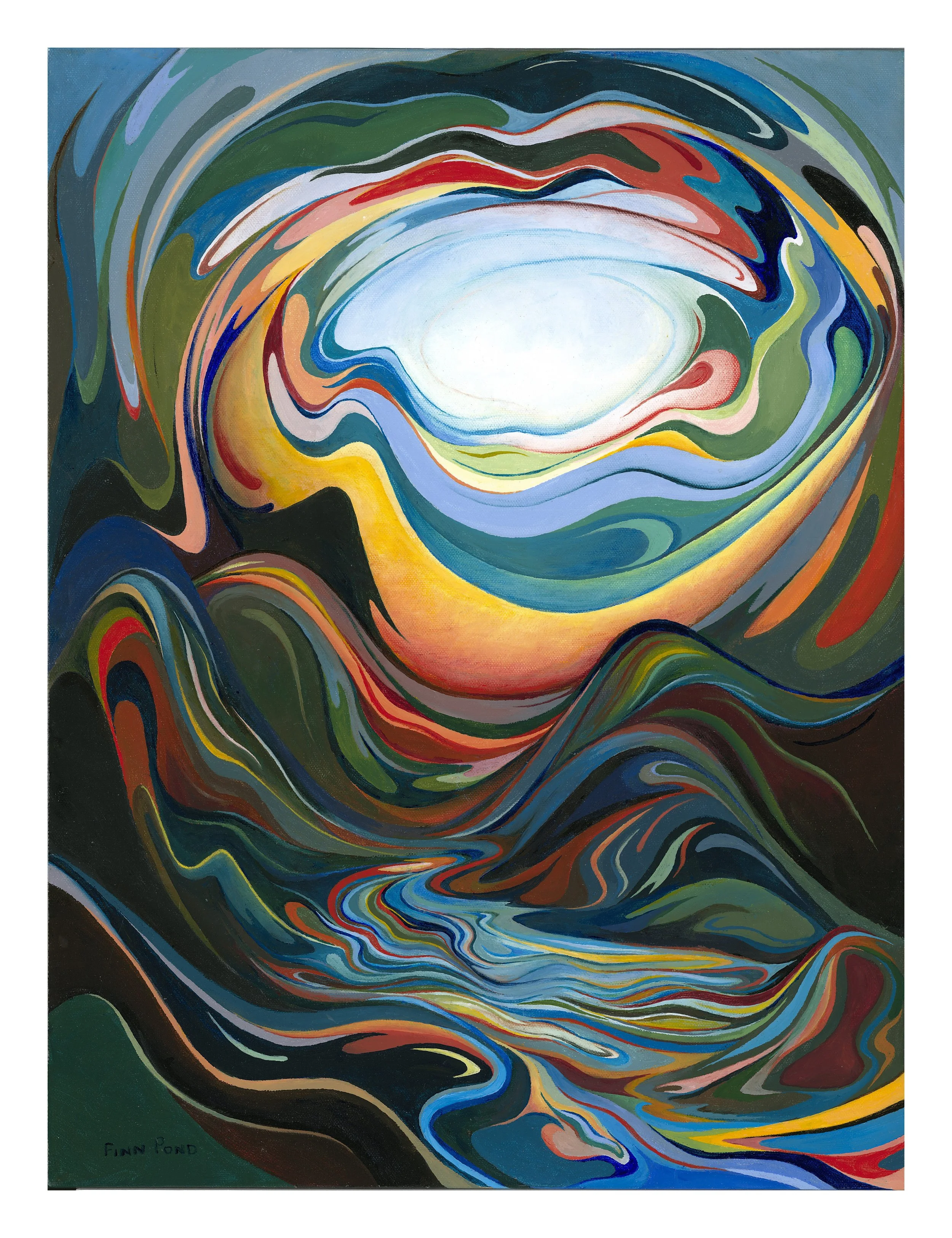What’s in a name?
When faced with an image we find unfamiliar or perplexing, our first response is often to ask, “What is that?” In the case of an abstract painting, someone may ask what it’s supposed to be, or to say, “I don’t get it.” We want to make sense of what we see. Indeed, can we fully appreciate what we don’t understand?
River
In some of my paintings, people see something familiar—an object or natural setting. My painting River is an example. The movement of color and shape clearly evokes images of fast-flowing mountain rivers, and hopefully elicits in the viewer past experiences, feelings, and emotions associated with a remembered river in their life.
Other paintings, such as the one shown above, though also inspired by an experience in a natural setting, is more enigmatic and open to a variety of interpretations. Each person may see and feel something different (perhaps even at different times). How do you interpret what you see? Some have suggested rising flames, falling water, an ecosystem in distress, emotional turmoil. How does your reaction to the painting change when I tell you that its title is Firefall? Does it now speak to you in a different voice?
My tendency has been to label paintings “untitled,” or to simply list the date of their completion. In doing so, I am giving permission to the viewer to interact personally with the painting, to make it their “own.” When encountering an untitled work, we are forced to engage the painting on its own terms, to begin a conversation with what is before us, to listen for it to speak. Thus, there is purpose and value in the “untitled” label, which asks the viewer to spend time with a painting and name it themselves.
There are also, however, drawbacks. There is a sense in which the artist has abandoned the painting, sending it into the world without an identity. Naming something acknowledges its existence and establishes our relationship to it. Names confer an identity and give things a place in the world. More importantly perhaps, titling a painting opens the artist’s creative vision for others to see, bringing both artist and the viewer into a shared conversation with the painting. Acts of creation and interpretation are part of a continual dance involving the artist and an audience—without naming a painting the audience is left to dance alone.
So, to name or not to name?
Abstract art is limited only by our imagination, inviting us to see familiar objects and the natural world in new and unexpected ways, to explore emotions and experiences unconstrained by physical reality. It celebrates curiosity and freedom of expression, and invites viewers to use their own imagination in any encounter with a work of art. We respond to art idiosyncratically, but not in isolation. Some of my paintings will remain untitled, but I have come to appreciate the importance of sharing painting titles—names I have carried privately until now.
Peace . . .


